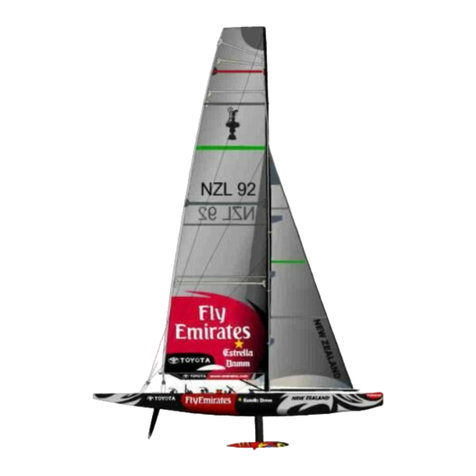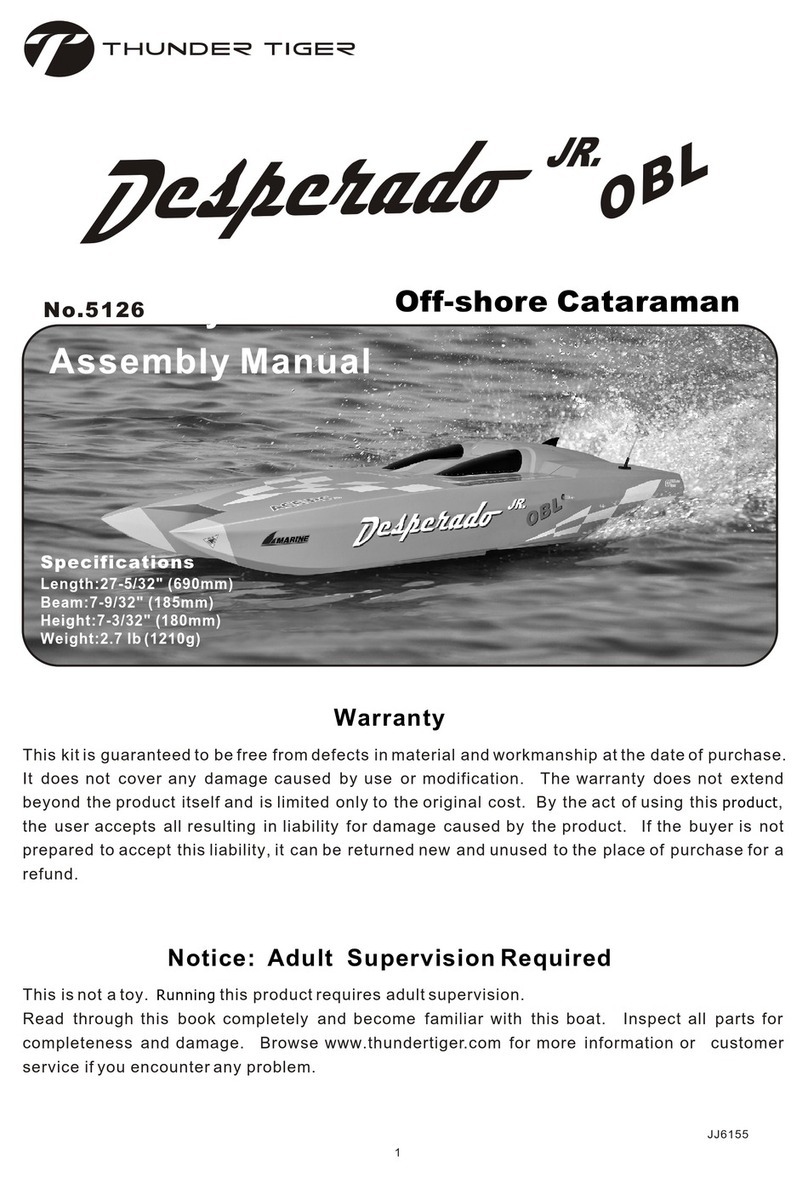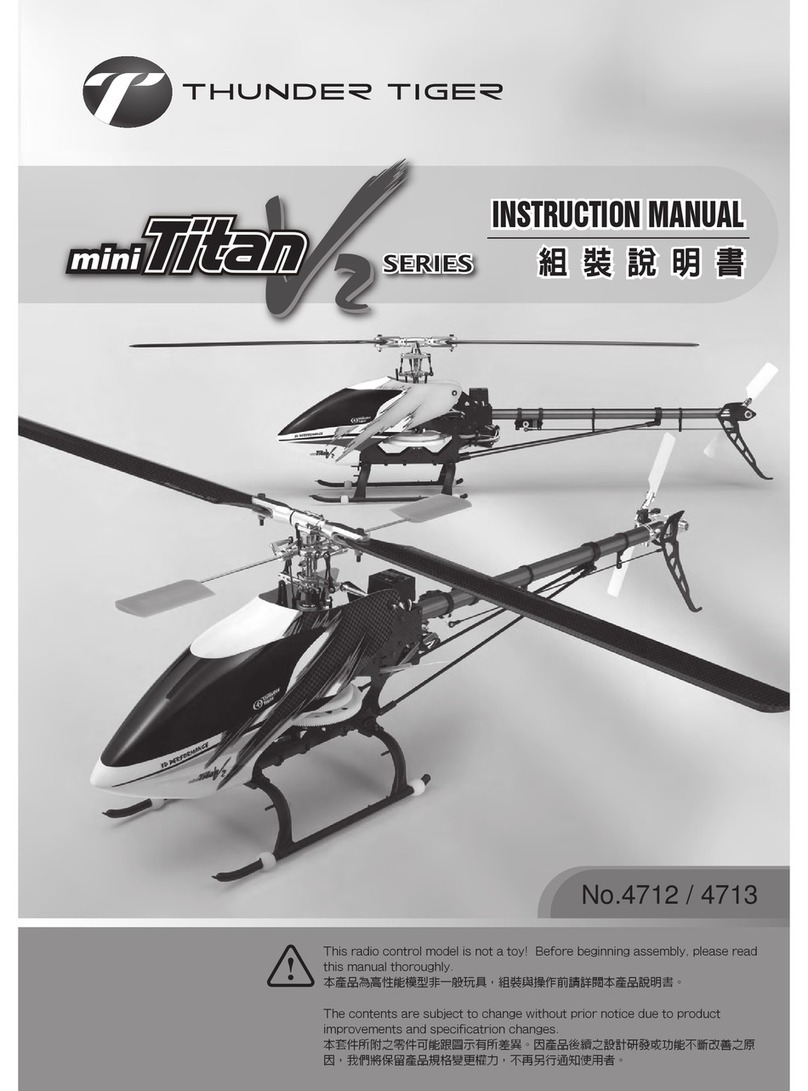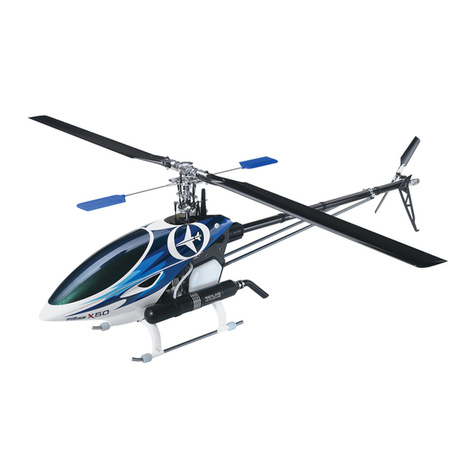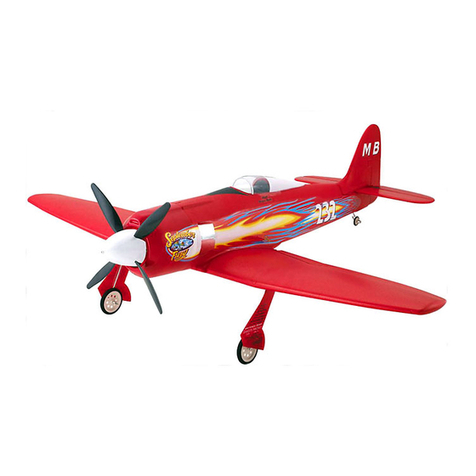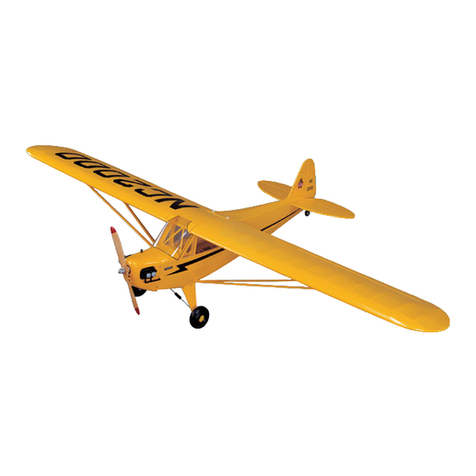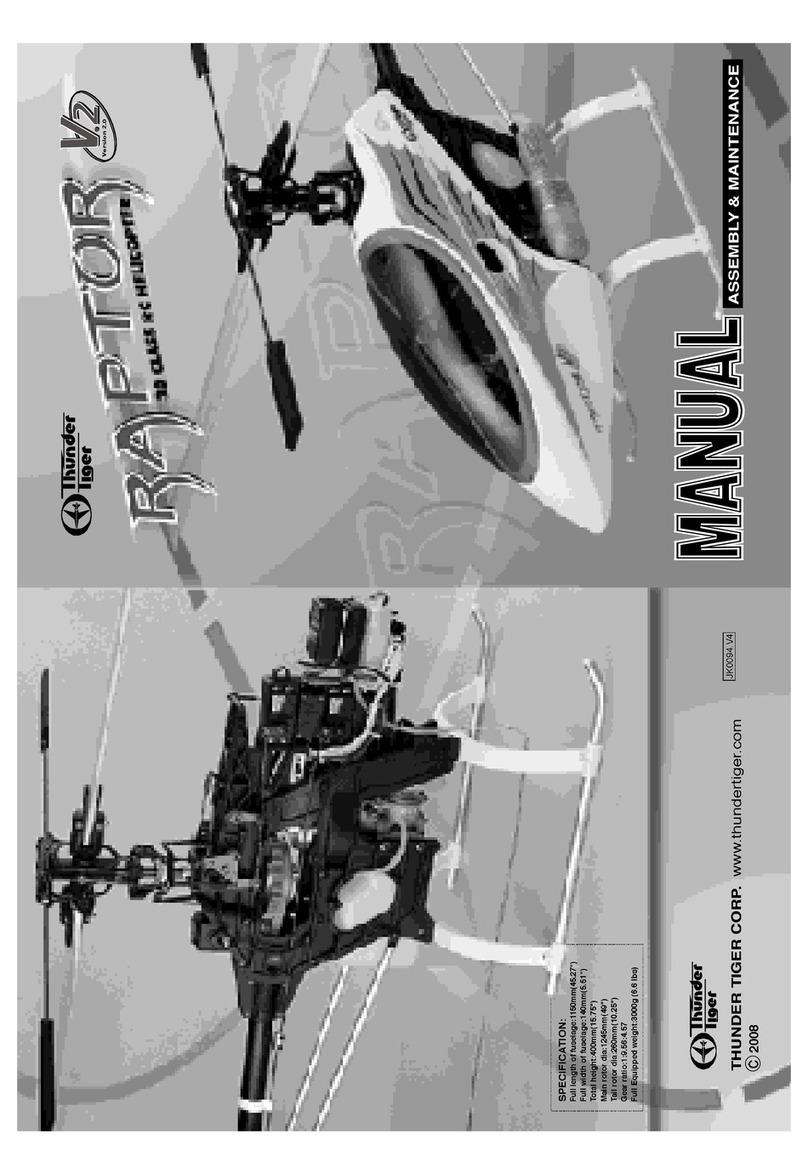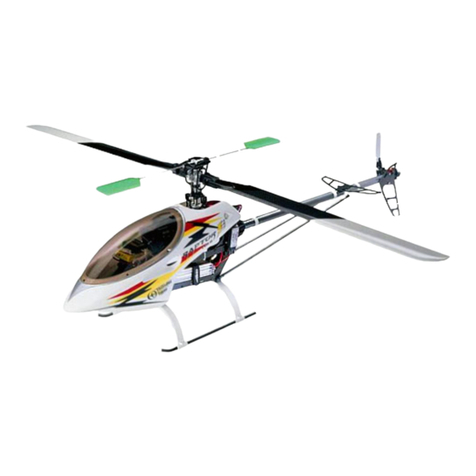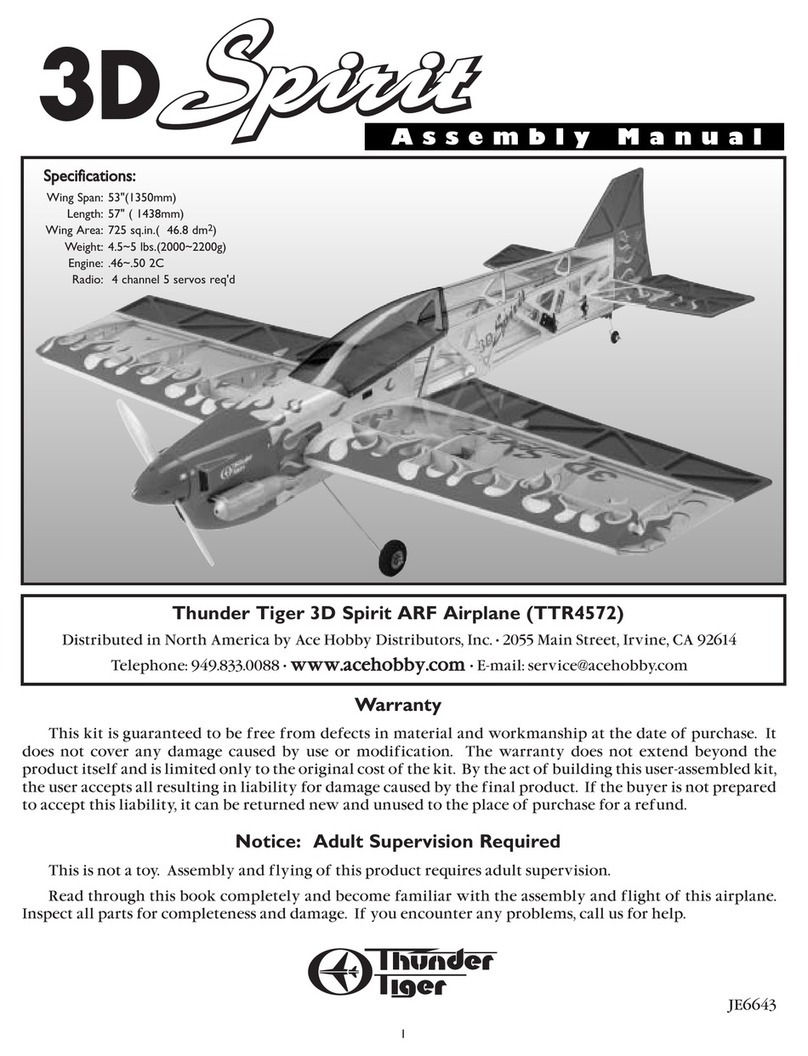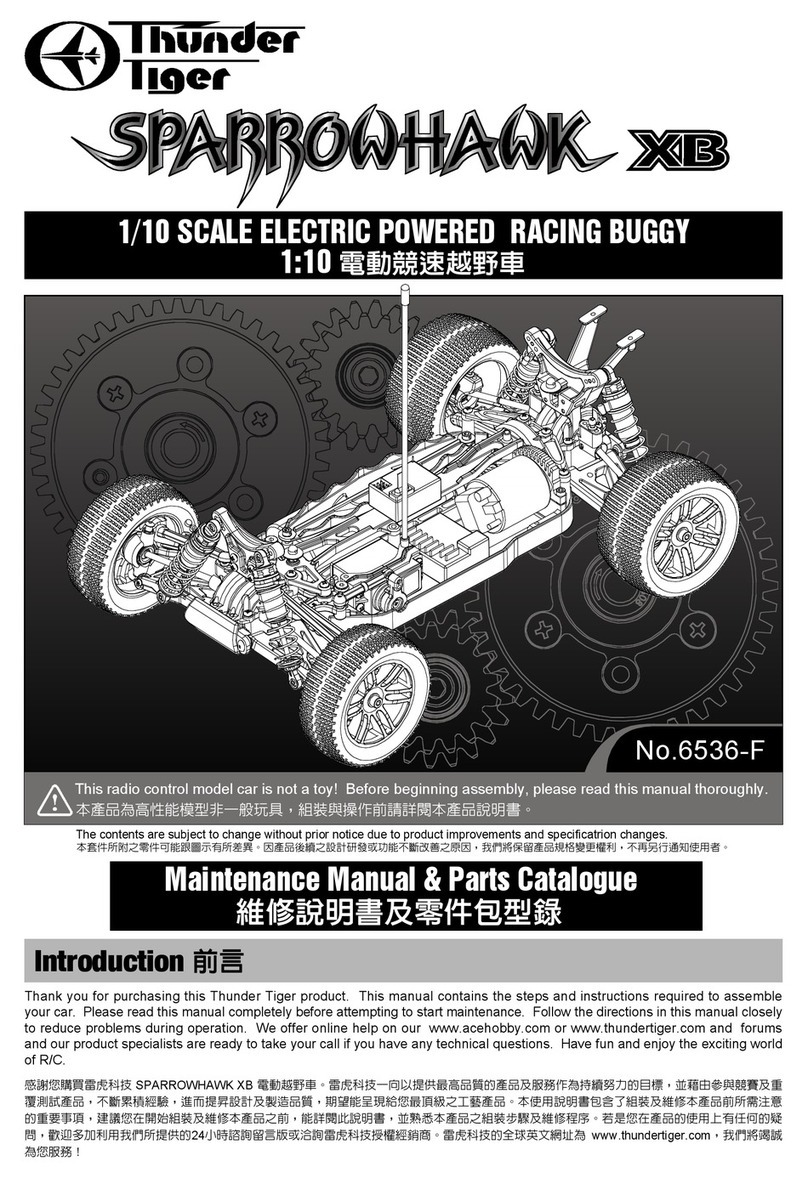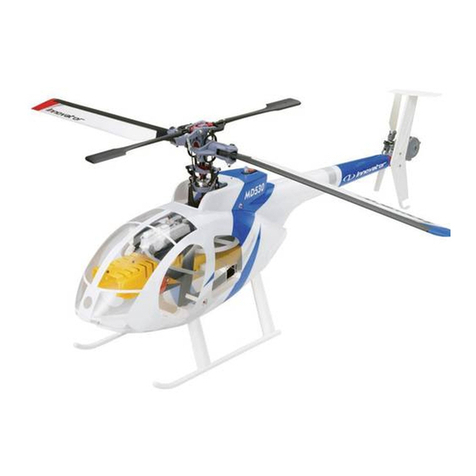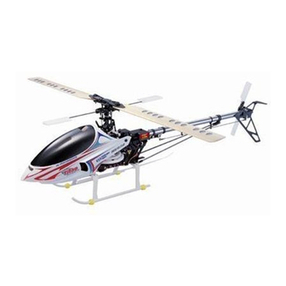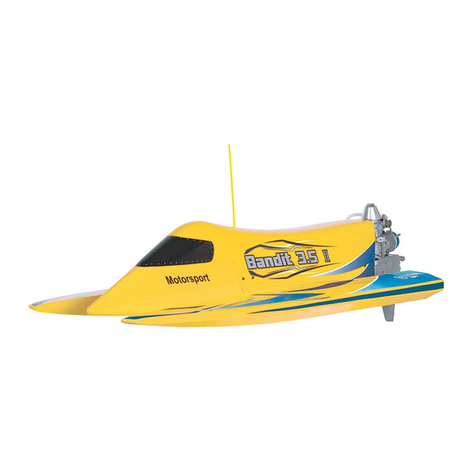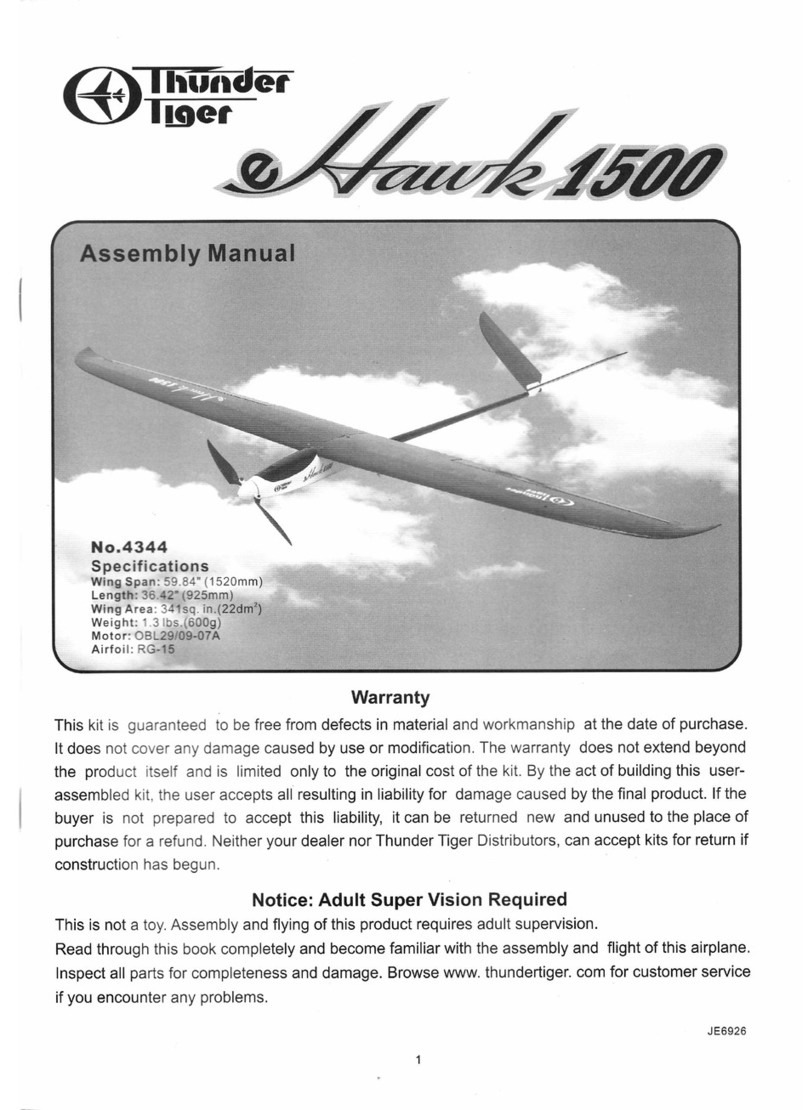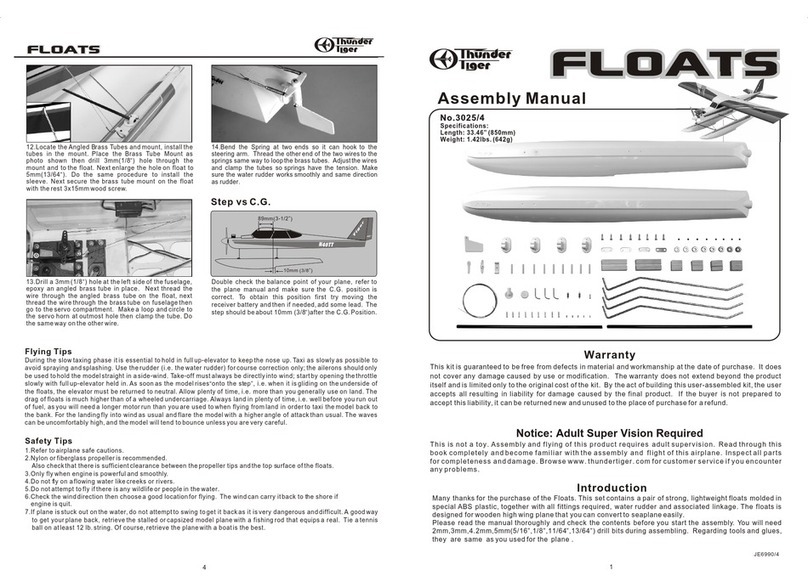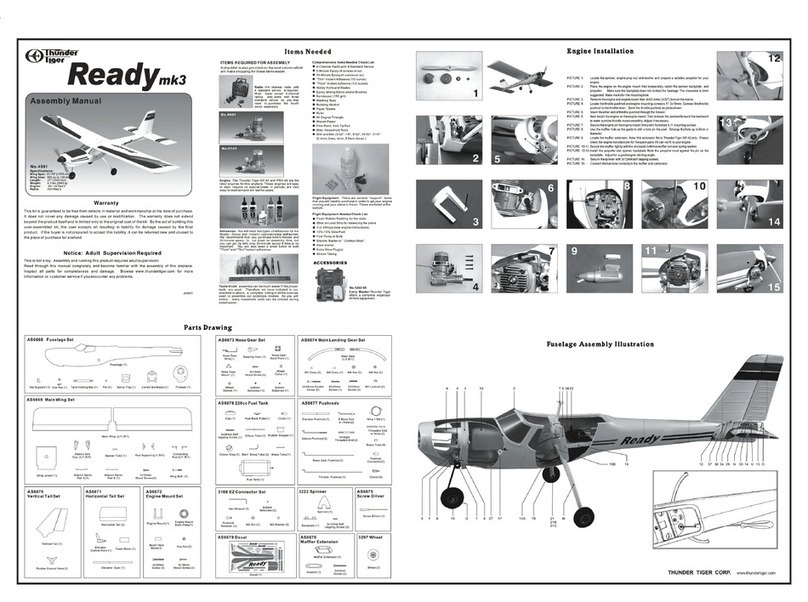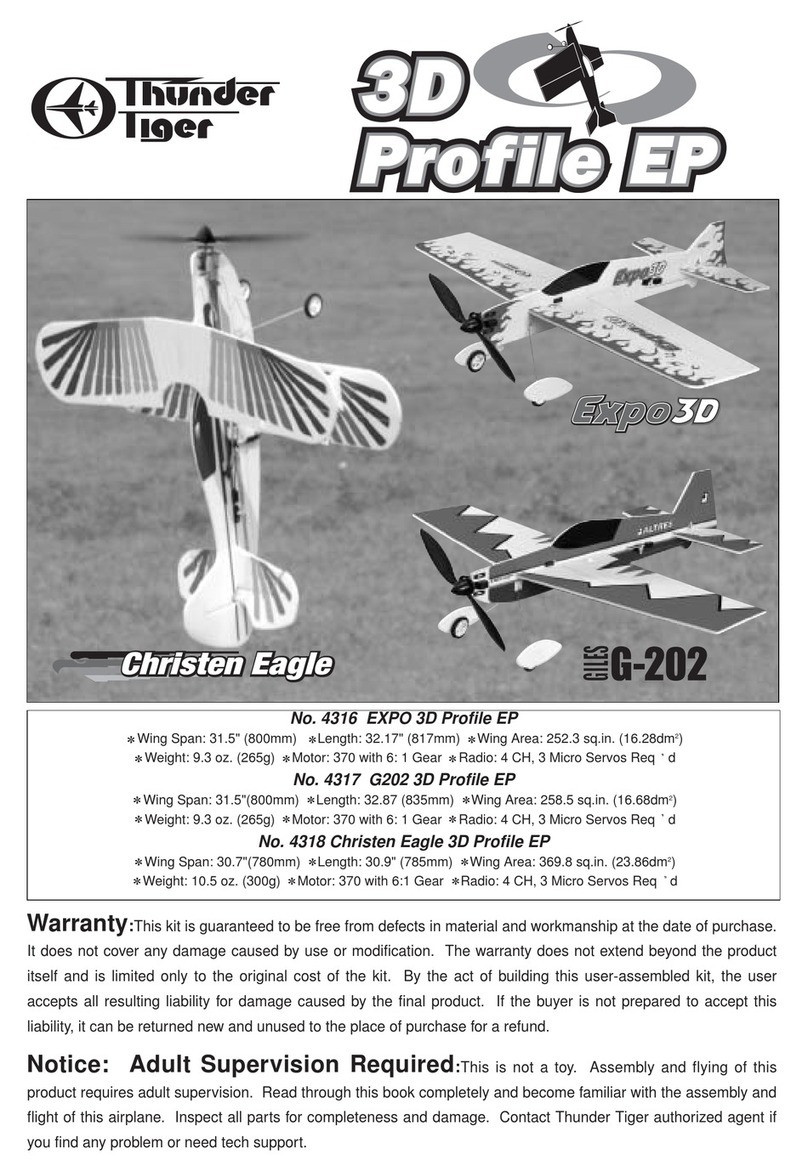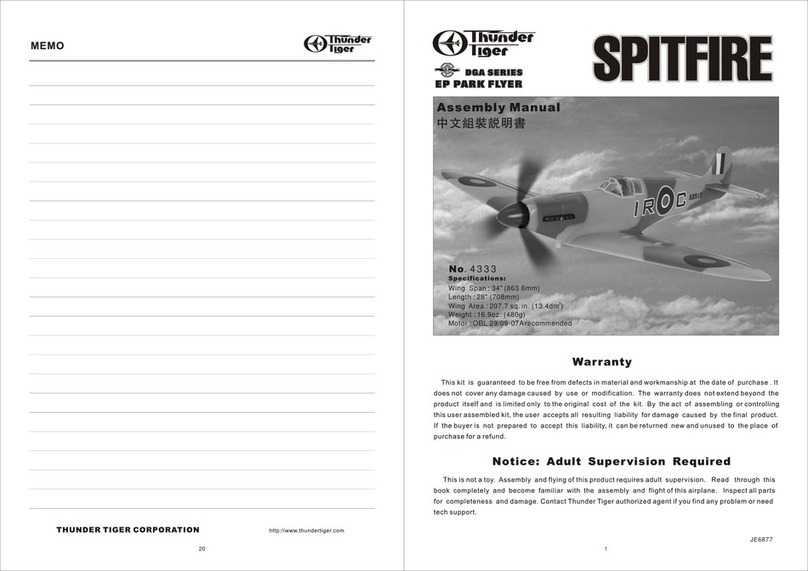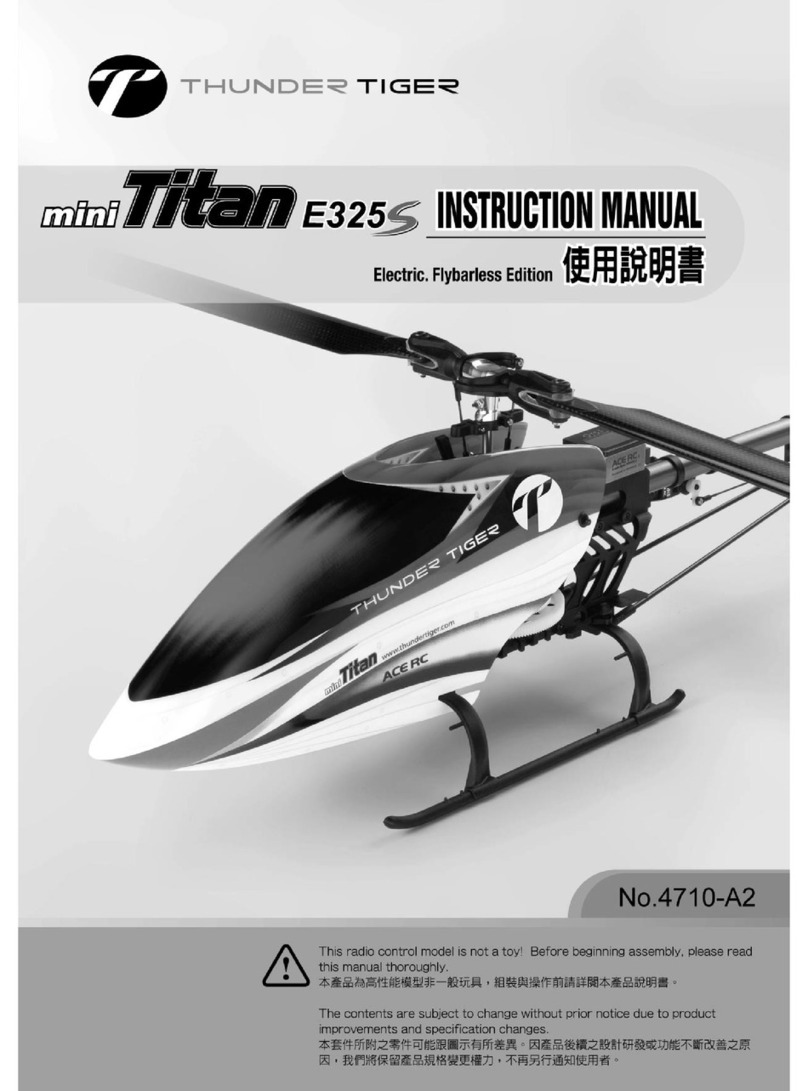SAFETY PRECAUTIONS
10 11
FIRST FLIGHT
Secondly,even though the eHawk 1500 is very easy to
fly, if you are a novice modeler/pilot, we highly
recommend that you seek the help of an experienced
modeler foryour first few flights. He can save you a lot
of timeand possibledisappointment byhelping youget
your model in the air safely and getting it trimmed out
for you.
Important: Theradio controlsystem isset upto operate
the control surfaces just lick a real airplanes as if the
pilot(you) aresitting in cockpit controlling the airplane.
When youwant theplane to dive, youpush theelevator
stick forward (up), to climb you pull the stick back
(down), toturn right, you move the aileronstick toright
with elevatorup andvise versa.When youwant toturn
the motor on you push the throttle stick forward and
when you want to turn the motor off you pull the stick
back. It is the turning that causes the most problems
with novice pilots because when the plane is flying
towards you a right turn command on the transmitter
cause theplane toturn toyour left (which is the planes
right). Get the picture? Fortunately the up and down
commands donot change. The easiestway to conquer
this problem is to try and always face your body near
the directionthe planesare flying. This meansthat you
will haveto look over your shoulder at times, butmany
modelers findthis aneasy wayto learn.
THE FIRSTFLIGHTS
You should always use the first few flights to get
accustomed to your new airplane and its flying
characteristics. Keep the model upwind and climb to a
good comfortable altitude to cut off the motor and trim
your eHawk 1500 for a glide. At altitude cut the motor
and start your glide. Have an experienced modeler
adjust thetrims ofthe transmitterfor youuntil theplane
will glide straight and level without any other control
input. Once the trims are set practice making smooth
turns inboth directions while losing as little altitude as
possible. When the eHawk 1500 starts to get too low
for comfortturn themotor backon and climb backup to
altitude. Practice this climbing and gliding until you
are comfortablewith theairplane.
Depending onthe battery you use the eHawk 1500 will
make 5to 6 good climbsup toa nice thermal searching
altitude from single battery charge. Once the ESC
shuts offthe power to the motor you will needto setup
for your landing. Continue to make smooth gently
turns whilelining up the eHawk 1500 with your landing
strip. Once you are set up to land keep the wings level
and let the model settle in for an nice gentle landing
while addingup elevatorto keepthe noseup slightlyas
the planeslows down. Make severalflights like this to
really familiarize yourself with the characteristics of
your modeland tolearn theglide anddistance covering
abilities of the eHawk 1500. Onceyou have mastered
a good"comfort level"you areready tostart searching
for thermalswhich willreally increaseyour flighttimes.
THERMALS
high, lastingfor several hours, and covering dozens of
miles. The following paragraphs will help explain how
to take advantage of natures energy sources
called thermals.
"Thermal" is the term applied to columns of rising air.
This air is rising because it is warmer than the
surrounding air. A dust devil is simply a thermal which
ahs picked up some dust. Even a tornado is very
similar toa thermal,but ofcourse muchstronger.
Thermals occur when the sun, or other heat source,
heat the air in one location faster and/or warmer than
the surrounding air. Darker surfaces (plowed fields,
asphalt parking lots, etc.) absorb the sun's energy
faster than lighter colored and are generally good
thermal generators. This warmer air is lighter (less
dense) thanthe coolerair andthus rises. The risingair
naturally startsto rotate,much likewater goingdown a
drain, and forms an inverted funnel shaped column
that usually gets larger with altitude. This warmer air
often contains water vapor which condenses as it
reaches thecooler airhigh abovethe earthforming big
puffy Cumulusclouds thatexperienced sailplaneflyers
will watchto determinewhere thethermals areforming.
Thermals vary in strength, but often contain air that is
rising at speeds over 1200 feet per minute. Some
thermals are so strong they can even rip a sailplane
apart, especially if the plane is flying fast when it
passes throughthe thermal.
THERMAL SOARING
It takes lots of practice and concentration to thermal
soar like the Hawks and Eagles. Since the pilot is not
sitting inside an model sailplane, he cannot feel the
thermal, hecan onlysee his sailplane's reaction to the
thermal. Therefore,the majorityof thetime, unlessthe
pilot is paying careful attention to the plane, he may
not even realize that plane is near a thermal. Since
most thermalsare relativelysmall, lessthan ahundred
feet in diameter near the ground, the sailplane will
rarely fly directly into the thermal and start rising.
More likely, it will fly near a thermal and the wing
closest to the thermal will rise turning the plane away
from thethermal. Soas youcan see,an inexperienced
pilot may bounce around between the thermals with
ever knowingthat heis encounteringrising air.
In orderto take advantage of thermals, you need to fly
smoothly withas fewcontrol inputsas possible. Watch
the sailplane carefully and it will tell you what the air
around itis doing.
When a sailplane does fly directly into a thermal it will
either start rising or stop sinking at its normal rate.
Either case is reason enough to explore further.
Continue flyingstraight aheaduntil youhave obviously
passed through the area of strongest lift. Now start
circling in fairly tight, but smooth circles. Because of
the thermals inverted funnel shape, the lower the
planes altitude, the tighter the circles need to be. As
the planegains altitude,the diameterof thecircles can
be increased. If you see the plane falling off on one
side of the turn, move the circle over into the stronger
lift. Thermalsare sweptalong bythe windso allow
your circle to drift downwind with the thermal. Be
careful when following a thermal downwind though as
you stillhave tobe ableto makeit backto thefield!
If thesailplane is flying along and all of a sudden turns
by itself,it has probably flown near a thermal. Keep in
mind that thermal will have tendency to turn the plane
away, so make a 180 degree turn and fly back towards
the thermal. If you don't quickly encounter lift start
searching around that area. If you find the thermal,
follow the procedure outlined above to take advantage
of it.
Thermals can be generated at any time of the day, but
the strangest thermals are usually produced when the
sun is directly overhead 10:00am to 2:00pm seems to
be thebest timeto findthe strongestthermals.
If you find yourself getting too high or you're having
trouble getting out of a strong thermal. DO NOT dive
the plane to lose altitude. This will very quickly over-
stress the airframe and blow the wings off the plane.
The easiestand safest way toquickly losealtitude isto
apply fullrudder (eitherright orleft) andfull upelevator.
This willput theplane intoa tight spin thatwill normally
not over-stressthe airframe. This isespecially usefulif
the sailplane gets sucked into a cloud or gets too high
to see. The spinning action will give the sun a better
chance of reflecting off of the wing and catching
your attention.
As you might expect, with all this rising air, there must
also besome sinkingair. This sinkingair isthe
Safety Precautions
You as the pilot of this radio controlled model are
responsible forany accidentsthat mayoccur duringits
use. Werecommend thatyou flyyour modelat amodel
club fieldwhich isspecially setup for model flying. But
always besure thatyou operatethe modelin asafe and
careful manner and read the Safety Cautions which
enclosed inthe kitas following.
Congratulations
Now that you have completed the assembly of your
eHawk 1500 model we feel that have a very capable
and good looking 2-meter electric sailplane. We hope
that you will enjoy this model and get many hours of
flying pleasure from its use. Thank you for purchasing
this eHawk 1500 from Thunder Tiger and we look
forward to providing you with other great R/C products
in thefuture.
Thermal soaring is one of the most interesting and
challenging types of flying there is. Believe it or not,
your eHawk1500 iscapable offlights thousandsof feet
sailplane pilotsenemy andone of the factorsthat really
make eHawk 1500 challenging. "Sink" as it is referred
to, is usually not as strong as the nearby thermals, but
is canquickly puta sailplaneon theground. Sinkin one
of the reasons, you have to be very careful when
chasing a thermal downwind. If you encounter sink,
immediately turn and fly 90 degrees to the direction of
the wind. Apply a little down elevator to pick up some
speed andget outof thebad airas quicklyas possible.
